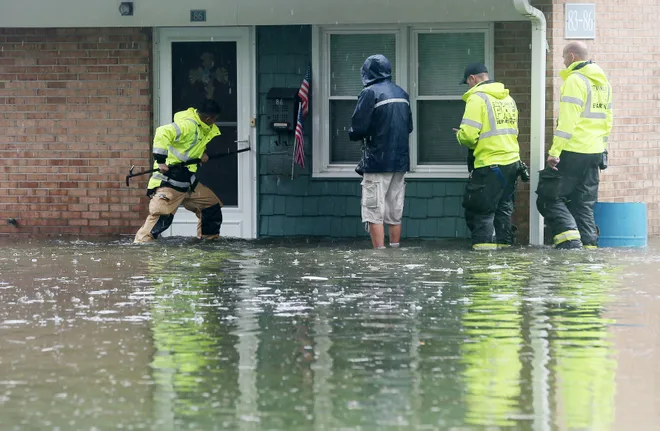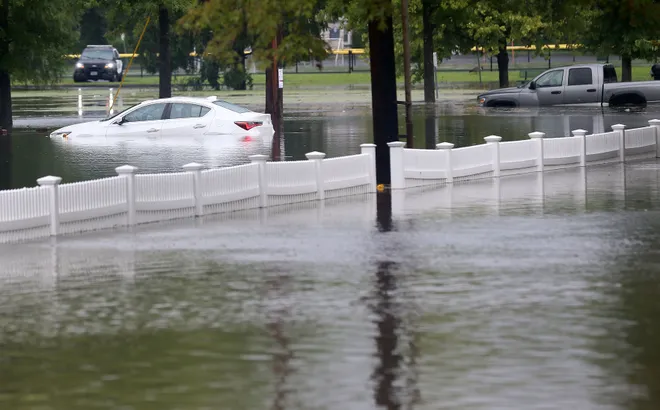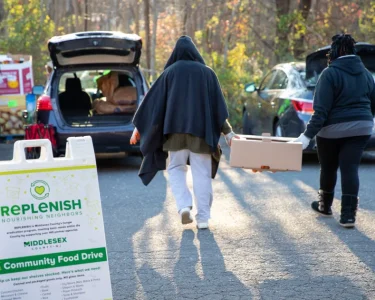In a devastating turn of events, severe Flooding Devastates Connecticut has claimed the lives of two individuals and forced the evacuation of at least 100 residents. The unprecedented rainfall has left communities reeling, as emergency responders work tirelessly to rescue those stranded and assess the damage.

The torrential downpour, which began late Sunday night and continued into the early hours of Monday, inundated large parts of the state.
The National Weather Service reported that some areas received up to six inches of rain within a short period, overwhelming local drainage systems and causing rivers to surge over their banks.
Tragic Loss of Life
Authorities confirmed that two people have lost their lives due to the flooding. The victims, whose identities have not been released pending notification of their families, were caught in the fast-moving waters that swept through several communities.
Local officials have expressed their condolences and are urging residents to prioritize safety as rescue operations continue.
“We are deeply saddened by the loss of life in this tragic event,” said Connecticut Governor Ned Lamont. “Our emergency services are working around the clock to assist those affected and to prevent further tragedy.
We ask that everyone remain vigilant and follow all safety instructions.”
Mass Evacuations and Rescues
The flooding has led to the evacuation of more than 100 residents, with many more potentially at risk as water levels remain dangerously high.
Emergency shelters have been set up in several towns, providing temporary housing for those displaced by the disaster.
First responders have been using boats and high-water vehicles to reach stranded individuals, some of whom were trapped in their homes as floodwaters rose rapidly.
Rescue efforts have been hampered by the ongoing rain, which has made some areas inaccessible. However, authorities remain determined to ensure the safety of all residents.
“We’re doing everything we can to reach everyone who needs help,” said a spokesperson for the Flooding Devastates Connecticut Department of Emergency Services. “It’s a challenging situation, but our teams are highly trained and prepared to handle these conditions.”

Communities Devastated
The Flooding Devastates Connecticut has caused extensive damage to homes, businesses, and infrastructure across the affected areas.
Roads have been washed out, power lines downed, and numerous properties left uninhabitable. In some neighborhoods, residents have returned to find their homes completely submerged or filled with mud and debris.
Local businesses, already struggling due to the economic impacts of the COVID-19 pandemic, now face the additional burden of flood damage.
Many owners are unsure how they will recover, with the prospect of lengthy closures and costly repairs looming.
“I’ve never seen anything like this in my life,” said one resident of a hard-hit community. “Our whole street is underwater. People have lost everything.”
Climate Change Concerns
This extreme weather event has reignited discussions about the role of climate change in the increasing frequency and severity of natural disasters.
Flooding Devastates Connecticut, like many other states, has seen a rise in the number of severe storms and flooding incidents in recent years, prompting concerns that such events may become the new normal.
Environmental experts warn that without significant action to address climate change, these types of disasters will continue to escalate.
They are calling for immediate measures to reduce carbon emissions and improve infrastructure resilience to withstand future extreme weather.
State Response and Next Steps
In response to the disaster, Governor Lamont has declared a state of emergency, mobilizing additional resources to assist in the recovery effort.
State agencies are coordinating with local governments to provide relief, including financial assistance for those affected by the flooding.
As the rain subsides and waters begin to recede, attention will turn to the massive cleanup and rebuilding effort.
Damage assessments are already underway, and federal aid may be sought to help cover the costs of recovery.
Residents are urged to remain cautious, as hazards such as downed power lines, contaminated water, and unstable structures pose ongoing risks.
Authorities have also warned of the potential for additional flooding in the coming days, as rivers and reservoirs remain swollen.
The impact of this disaster will be felt for months, if not years, to come. As Connecticut begins the long road to recovery, the resilience of its communities will be tested.
Yet, amidst the devastation, there is also hope—hope that lessons learned from this tragedy will lead to better preparedness and stronger communities in the face of future challenges.
For more News like this and in-depth coverage of how climate change is affecting communities across the nation, visit our Digital Digest.




